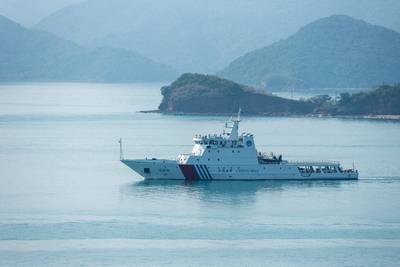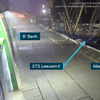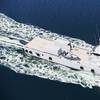China's Second Day of War Games Around Taiwan Tests Ability to “Seize Power”
China's military carried out a second day of war games around Taiwan on Friday, with drills to test their ability to "seize power" and control key areas, exercises it has said were launched to punish Taiwan's President Lai Ching-te.
The two days of drills in the Taiwan Strait and around groups of Taiwan-controlled islands near the Chinese coast started just three days after Lai took office. Taiwan has condemned China's actions.
China, which views democratically governed Taiwan as its own territory and denounces Lai as a "separatist", decried his inauguration speech on Monday, in which he urged Beijing to stop its threats and said the two sides of the strait were "not subordinate to each other."
The Eastern Theatre Command of the People's Liberation Army said in a brief statement that its forces on Friday continued with their drills, dubbed "Joint Sword - 2024A."
The exercises are to "test the ability to jointly seize power, launch joint attacks and occupy key areas," it said.
China has never ruled out the use of force to bring Taiwan under its control.
The command showed an animated video on Friday on its WeChat social media account of missiles being launched at Taiwan from the ground, air and sea, which then slam into the cities of Taipei, Kaohsiung and Hualien in balls of flame.
"Sacred weapons to kill independence," read words in red, written in the traditional Chinese characters Taiwan uses, at the end of animation.
Taiwan's armed forces have mobilised to monitor and shadow Chinese forces.
Taiwan's defence ministry on Friday published pictures of F-16s, armed with live missiles, patrolling the skies.
It also showed pictures of Chinese coast guard vessels, which are taking part in the drills, and Chinese Jiangdao-class corvettes, though it did not say exactly where the images were taken.
The ministry said that as of 6 a.m. (2200GMT) on Friday, it had detected 49 Chinese military aircraft, 19 navy and seven coast guard ships. Of the aircraft, 28 crossed the strait's median line, which once served as an unofficial barrier though China says it does not recognise it.
The closest Chinese aircraft got to Taiwan's coast was 40 nautical miles (74 km) from the northern city, and navy base, of Keelung, according to a map the ministry provided.
TALKS REBUFFED
Lai has repeatedly offered talks with China but has been rebuffed. He says only Taiwan's people can decide their future, and rejects Beijing's sovereignty claims.
Taiwan is well used to China's military threats, and the latest drills have caused no undue alarm on the island, with life carrying on as normal.
On China's highly regulated Weibo social media site, "Eastern Theatre" was the top searched item, with most of the comments supporting the drills.
Another hot topic was "the return of Taiwan".
The defeated Republic of China government fled to Taiwan in 1949 after losing a civil war to Mao Zedong's communists, who founded the People's Republic of China.
The Republic of China remains Taiwan's official name, though only 12 countries formally recognise it diplomatically, mostly small, developing nations like Palau and Guatemala.
In a Friday commentary, the official newspaper of China's ruling Communist Party, the People's Daily, said it was a shared belief among Chinese people that the territory of the nation cannot be divided, the country cannot be thrown into chaos and its people cannot be separated.
The recent actions of the "leader of the Taiwan region" will only accelerate the "destruction" of pro-independence forces in Taiwan, it wrote.
China is willing to create "broad space for peaceful reunification" but will never leave any room Taiwan "separatist activities," the newspaper added.
Analysts, regional diplomats and senior Taiwan officials noted that so far the scale of the drills were smaller than the similar exercises in 2022 and were widely anticipated by Taiwanese and foreign officials, but they still raised the risk of accidents or miscalculations.
They said Beijing was sending a finely calibrated warning that Chinese forces could attempt a swift blockade if it wanted to bring Lai to heel.
(Reuters - Reporting by Bernard Orr and Ben Blanchard; Editing by Christopher Cushing, Gerry Doyle and Michael Perry)














